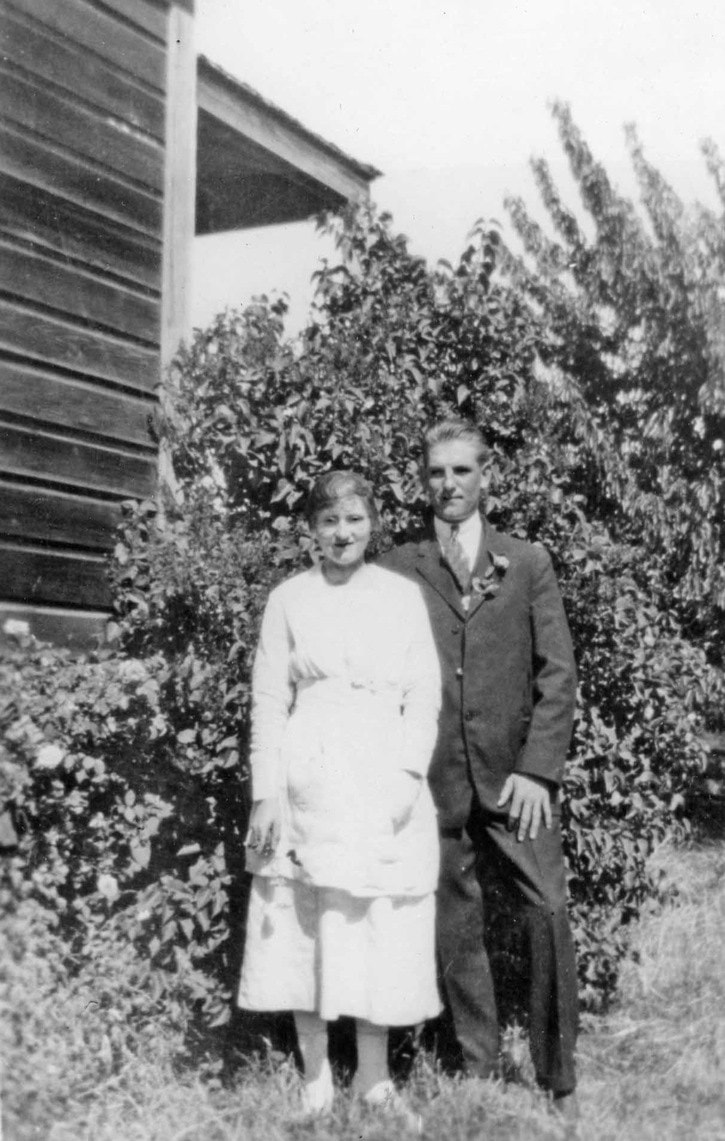Today as you drive up Phillips Road and view the lovely Sun River Community Garden, on your right nearer the river you might observe fruit trees from a long ago abundant orchard.
This 1922 wedding day photo shows the fruit trees in their prime, framing the bride and groom, alongside the Phillips farmhouse. It’s hard to imagine it’s almost one hundred years since the dapper Rueben Acreman won his bride, Jessie, youngest daughter of the pioneer Phillips family.
It was 1868 that William Phillips arrived on our shores (some say he’d been on a Royal Navy vessel) and went to work for the Muirs in their lumbering enterprise. He took up a section of land bordering the Sooke River on the west, but probably lived a lonely life until the Milne family emigrated to the east side of the river. When he met Edward Milne’s sister Janet, he was quick to propose marriage in 1885, and the couple raised six children on the Phillips farm.
The hardworking pioneering couple planted a large garden for subsistence and a number of fruit trees that have continued to give fruit for well over a century. (Nowadays the bears seem to be first in line to harvest the apples.) Their children were John, Edward, Susannah, Eliza, William and Jessie. The sons followed their father in developing an extensive logging enterprise.
Meanwhile, in the early 1900s the Benjamin Acreman family from Newfoundland arrived in the village with their seven tall stalwart sons. Second youngest of these boys was Rueben, who soon got a job in the fishtraps industry that operated out of Sooke Harbour.
Perhaps he was particularly charming, to win the heart of such a shy, demure young girl as Jessie Phillips. Hardworking as they were, the Philips sons and daughters had a reputation for being quiet-natured. While Jessie was the only one to marry, there was no issue at all from the Phillips family, and today it is only the road, logging equipment at the museum, and the orchard of trees that carries their heritage forward.
By the 1960s after the fishtraps’ closing, Rueben was employed as custodian at Saseenos School, where he enjoyed seeing the children. When he passed, he left a gift of books for the school’s library.
Elida Peers,
Historian
Sooke Region Museum
